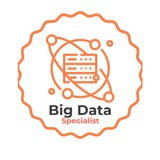Mathematics for Data Science Roadmap ✔ ✔ ✔ ✔ 🔹 🔹 🔹 📌 🔹 🔹 🔹 📌 🔹 🔹 🔹 🔹 📌 🔹 🔹 🔹 📌 🔹 🔹 🔹 📌 🔹 🔹 🔹 📌 🔹 🔹 🔹 📌 🔰 ✅ ✅ ⚡ ✅ ✅ 🚀 ✅ ✅ 💡
tg-me.com/datascience_bds/779
Create:
2025-04-05 2025-06-28 01:09:31
Mathematics for Data Science Roadmap ✔ ✔ ✔ ✔ 🔹 🔹 🔹 📌 🔹 🔹 🔹 📌 🔹 🔹 🔹 🔹 📌 🔹 🔹 🔹 📌 🔹 🔹 🔹 📌 🔹 🔹 🔹 📌 🔹 🔹 🔹 📌 🔰 ✅ ✅ ⚡ ✅ ✅ 🚀 ✅ ✅ 💡
BY Data science/ML/AI
Warning : Undefined variable $i in /var/www/tg-me/post.php on line 283 tg-me.com/datascience_bds/779
View MORE
Open in Telegram
Data science ML AI Telegram | DID YOU KNOW?
What is Secret Chats of Telegram Secret Chats are one of the service’s additional security features; it allows messages to be sent with client-to-client encryption. This setup means that, unlike regular messages, these secret messages can only be accessed from the device’s that initiated and accepted the chat. Additionally, Telegram notes that secret chats leave no trace on the company’s services and offer a self-destruct timer.
Spiking bond yields driving sharp losses in tech stocks A spike in interest rates since the start of the year has accelerated a rotation out of high-growth technology stocks and into value stocks poised to benefit from a reopening of the economy. The Nasdaq has fallen more than 10% over the past month as the Dow has soared to record highs, with a spike in the 10-year US Treasury yield acting as the main catalyst. It recently surged to a cycle high of more than 1.60% after starting the year below 1%. But according to Jim Paulsen, the Leuthold Group's chief investment strategist, rising interest rates do not represent a long-term threat to the stock market. Paulsen expects the 10-year yield to cross 2% by the end of the year.
A spike in interest rates and its impact on the stock market depends on the economic backdrop, according to Paulsen. Rising interest rates amid a strengthening economy "may prove no challenge at all for stocks," Paulsen said.
Data science ML AI from us
